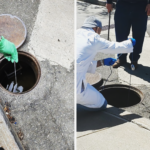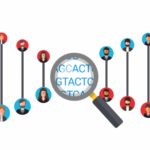Dealing with advances in science at the Seventh BTWC Review Conference
By Malcolm Dando | December 1, 2011
Ahead of the Seventh Biological and Toxin Weapons Convention (BTWC) Review Conference, which will be held December 5-22 in Geneva, Switzerland, the United Nations published 26 advance papers produced by state parties to inspire serious and spirited discussion for the event — and at least six of these papers focused on how advances in science and technology impact the BTWC and how, in the future, these advances should be considered by the states party to the convention. The attention paid to this theme signals a good start to the review conference, as there is perhaps no greater challenge to the biological community than simply keeping up with the staggering pace and advances of the life sciences.
But these preliminary documents are not — and have not been — the only literature broaching the topic of the advances in science and technology (S&T). Throughout 2011 alone, a series of reports were published on the subject, the latest of which was Trends in Sciences and Technology Relevant to the Biological Weapons Convention. Among other things, the report raises the question of how monitoring and assessing such trends might best be carried out — perhaps the most important question the BTWC faces.
The report’s findings are summarized in four main conclusions — none of which specifically addresses the need to oversee these technological developments in a regular and timely manner. Reflecting on how “gaining a deeper understanding of the drivers and roadblocks [for and against these developments] would provide a more meaningful picture of how and when S&T developments are likely to affect the convention,” the report also acknowledges that the convention has a continuing role in monitoring these advances and helping state parties understand them.
The problem, however, is that there is no set system in place — and these new advances need a watchful eye.
The report focuses, for example, on one advance — polymerase chain reaction (PCR), or the ability to amplify a specific DNA sequence many times over. The technique, which has become one of the most fundamental of modern biology since its discovery in the 1980s, “greatly expanded the ability to detect and analyse gene mutations, to associate genetic changes with particular diseases, and to enable medical diagnosis and genetic screening.” Due in part to the widespread popularity of PCR, the report states that since 2008, the costs of DNA sequencing “have decreased genome sequencing [which] can now be accomplished for approximately $0.10 per million bases of DNA or less than $10,000 per human genome.” Given that Moore’s Law states that there is a doubling about every two years (or 18 months) in the number of transistors on a computer chip for a fixed price, the impact of advances in DNA sequencing could be deeply profound — for good and perhaps for ill.
In addition to the 26 advance documents published by the UN, the BTWC’s Implementation Support Unit (ISU) prepared its own preliminary report that analyzes the state parties’ submissions, as well as other sources, and provides an overview of the reported technological developments. The ISU’s document overlaps with information in previous findings on emerging technologies; however, some new technologies, like advances in neurobiology, do deserve a second look. As the unit’s report states: “There have been reports … that identify security implications stemming from neurobiology. Since the last review conference, there have been advances in understanding the role of neuroregulators; how to influence psychological states and alter physical performance; as well as linking neurobiology to disease.”
This statement should serve as a reminder to us all that the problem of dual-use is much wider than just in relation to microbiology.
But the ISU’s overview points to another significant problem — one that was raised in a paper titled “Strengthening Biosafety and Security, While the Convergence of Biology and Chemistry Has Increased: Building Joint Responses Between the BTWC and CWC Regimes Against Misuse of Biological and Chemical Weapons.” Submitted by Poland, the paper focuses on the overlap between the BTWC and the Chemical Weapons Convention (CWC), as both conventions cover mid-spectrum agents, such as toxins and bioregulators (e.g., neurotransmitter chemicals). As chemistry and biology converge, the paper states, the similarity of the prohibitions embodied in the two conventions should not inadvertently become a gap in coverage. As each regime concentrates on what are perceived to be central issues, the misuse of mid-spectrum agents (for example, in so-called non-lethal agents) could become more and more neglected by both conventions.
The ISU’s overview highlights that a number of state parties are not concerned just with what the ongoing advances in science and technology might yield — but with how the monitoring and assessment of these developments can be improved. Australia, Japan, and New Zealand, for example, proposed an annual review of advances in science and technology relevant to the BTWC to replace the current — and, given the pace of change, absurd and rather superficial — quinquennial system that the review conference still uses.
It is how such proposals for the improved monitoring and assessment of scientific and technological developments are dealt with at the Seventh BTWC Review Conference that should be of most interest to observers. To be sure, the problems and new events in the biological community are important, but it is crucial, given the pace and scope of the ongoing advances in the life and associated sciences, that state parties are able to review those advances far more often. After all, discussing, say, the wild potential effects of fast-paced DNA sequencing or new viral agents is moot if there’s no system to control them.
Together, we make the world safer.
The Bulletin elevates expert voices above the noise. But as an independent nonprofit organization, our operations depend on the support of readers like you. Help us continue to deliver quality journalism that holds leaders accountable. Your support of our work at any level is important. In return, we promise our coverage will be understandable, influential, vigilant, solution-oriented, and fair-minded. Together we can make a difference.
Topics: Biosecurity, Columnists















